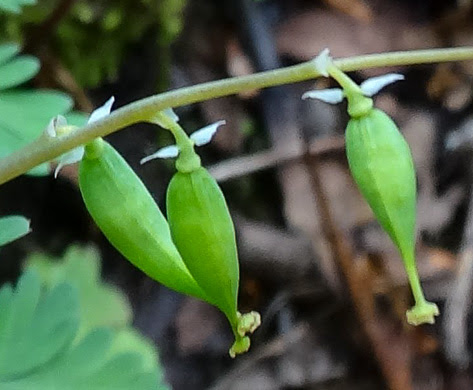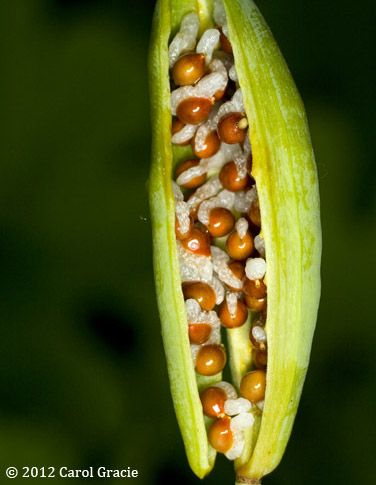Spring Wildflower Seed Hunt

By Carlie Graves
This season we can celebrate the many and healthy blooms of many spring wildflowers. It is a banner year! Thanks to a rainy March, we have been enjoying many, many blooms of Spring Beauty, Bloodroot, Dutchman’s breeches, Squirrel Corn, and Trout Lily. The Trilliums are close behind and are also looking healthy and as if they too will have a good seed set. It’s a great spring for collecting!
The seeds of these early bloomers often develop rapidly and are as quickly shed. These are some of my favorite plants, coming on the heels of wintry March, and when I began I was eager to help my little brood multiply but had many questions: When to collect? How many to collect? From which plants? We are assuming that we are collecting from plants in our own gardens or with the landowner’s permission. Here are a few collecting rules of thumb, distilled from the Xerces Society and my own experience, that help maintain the health of the plant community:
- Collect no more than 10% of the seed in any given population.
- 50 plants is considered the minimum population of plants to collect from.
- Collect a few seeds each from different plants of the same species rather than stripping one or two plants; this will provide a little more diversity in your seed collection.
- Have planting supplies on hand; most of these seeds must be planted immediately. Make sure you have the time in your schedule for this as well as for caring for these seeds and eventual plants until they can be planted out, usually in 1-3 years.

Bloodroot, Dutchman’s Breeches, and Squirrel Corn all have seed which develops quickly and must remain moist. It is best to plant this seed immediately but it may be held in the fridge in sealed plastic bags for a few days if necessary. The seed pods of these plants swell with ripening seed within a few weeks of pollination, then burst and the seed is scattered onto the ground. The seeds have elaiosomes, a small, fleshy and sweet white bit attached to the seed itself and beloved of ants, who collect these seeds, disbursing them in the process. Sometimes we can only stand and admire the seemingly chaotic processes of the natural world.
Trout Lily seed is also best planted immediately. Seed set on Trout Lily may be uneven and it is slow to grow! Expect germinated seed to spend one to three years in the pot.
In my area (Poughkeepsie), Bloodroot and Dutchman’s Breeches are ripe now. Squirrel Corn is past, but it may still be ripening if you live in a slightly cooler area. All of these seeds ripen to a dark tan or black. You can check a bulging seed capsule by breaking it open and checking the color of the seed. Usually the seeds will be available over at least a few days. As you may have already guessed, all these plants are members of the same plant family, the Poppy family (Papaveraceae.)
Next, plant! I use 4″ pots with a sterile potting soil. No extra fertilizer is necessary as these plants take a year or more to germinate. I use an outdoor table or shelf, kept above ground due to the jumping worms in my area. Water in dry spells and cover with screening (preferably) or fabric, over the winter to help protect from rodents. Snow is a great mulch over the cold season, and shade is your friend; it will help keep temperatures from fluctuating too much. My favorite propagation reference is Wildflowers: A Guide to Growing and Propagating Native Flowers of North America, by William Cullina. Enjoy and let us know how it goes!
